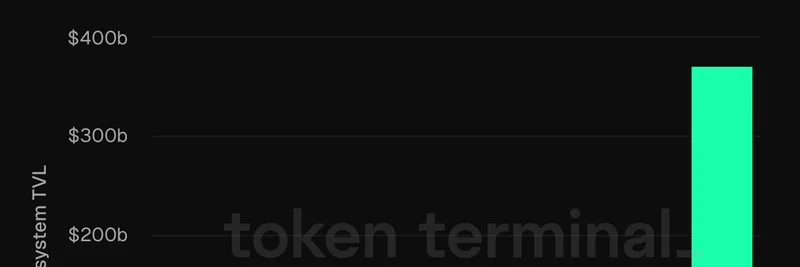If you've been scrolling through crypto Twitter lately, you might have stumbled upon a tweet from BSC News that's stirring up conversations about Pi Network. The post teases a full guide on what's buzzing around @PiCoreTeam and their $Pi token in 2025. As someone who's covered the wild world of crypto from the editor's desk at CoinDesk and now diving deep into meme tokens at Meme Insider, I see Pi Network as a fascinating case study. It's got that viral, community-driven energy reminiscent of meme coins, even if it's not strictly one. Let's break down the guide they linked to, explain the basics, and weigh in on whether this mobile mining phenomenon is worth the fuss.
What Exactly Is Pi Network?
Pi Network burst onto the scene back in 2019, founded by a couple of Stanford PhDs, Nicolas Kokkalis and Chengdiao Fan. The big idea? Make crypto mining something anyone can do right from their phone, without needing a room full of power-hungry rigs like you'd see with Bitcoin. Instead of the usual "Proof of Work" that guzzles electricity, Pi uses something called "Proof of Contribution." This means you earn coins by contributing to the network—think daily check-ins, inviting friends, and building trust circles.
It's all about accessibility. Download the app from the App Store or Google Play, sign up, and you're a "Pioneer" ready to mine. No fancy hardware required; just tap a button once a day. This low-barrier entry has helped Pi rack up over 60 million users across 233 countries, with millions verified through KYC (Know Your Customer, a standard ID check in crypto to prevent fraud).
The Roadmap: From Beta to Mainnet Glory
Pi's journey is mapped out in phases, as detailed in their 2021 whitepaper. It started with a Beta phase to build the community, hitting 3.5 million users early on. Then came the Testnet in 2020, where they rolled out nodes (basically, computers helping run the network) worldwide—over 10,000 active ones.
The real game-changer is the Mainnet phase, which kicked off in late 2021. It had an "Enclosed" stage for internal testing, but 2025 brought the "Open Mainnet" launch. This means Pi is now connected to the wider blockchain world, allowing real transactions and integrations. The goal? Turn Pi into a everyday digital currency that promotes financial inclusion, especially in places where traditional banking is spotty.
Pi Coin: The Heart of the Ecosystem
At the center is Pi Coin (PI), the token you mine on your phone. There's a cap of 100 billion coins total, which helps control supply. But watch out—it's got an inflationary model, meaning more coins enter circulation over time, which could affect value. Post-Open Network, Pi's listed on exchanges like OKX, and more could follow. Prices have swung from highs around $2.98 down to $0.60, showing the volatility typical in crypto.
Mining is dead simple: Open the app, tap to mine, and build your earnings through referrals and security circles (groups of trusted users that boost network safety). It's a far cry from Bitcoin's energy-hogging setup, making it appealing for newcomers.
2025 Updates: What's New and Exciting?
The BSC News guide highlights 2025 as a pivotal year, with the Open Mainnet launch announced in late 2024 and celebrated on Pi Day (March 14, 2025—get it? Pi like 3.14). This opens doors for real-world use, like buying stuff with Pi or building apps on the network.
Key highlights include:
.pi Domains Auction: From March 14 to June 28, 2025, Pioneers can bid on custom .pi web domains. Minimum bid? Just 10 Pi, plus tiny gas fees (transaction costs). It's a fun way to claim your digital identity and boosts user engagement.
PiFest Shopping Event: Ran from March 14-21, 2025, with over 125,000 sellers signing up and 58,000 active on the Map of Pi. This shows Pi in action for real commerce, like a global online marketplace powered by crypto.
Developer Freedom: No more pre-approvals needed to launch apps on Mainnet. Head to the Developer Portal and build away, fostering innovation in dApps (decentralized apps).
These moves are all about shifting from hype to utility, turning Pi into something you can actually use.
The Community Buzz and Some Red Flags
Pi's strength is its massive, engaged community—think events like PiFest that make users feel like owners. Discussions are lively on platforms like X, and the Open Network has folks optimistic about future apps and integrations.
But it's not all smooth sailing. Skeptics question the 60 million user claim, with some data suggesting only about 9 million active wallets. There've been regulatory hiccups, like probes in Vietnam over fraud worries, and debates on privacy (does the app collect too much data?) and how the team makes money (ads in the app). Plus, the long wait for Mainnet led to frustration, and the token's value depends on adoption—without real use, it could fizzle.
Is Pi Network Worth Your Time in 2025?
In the meme token world we cover at Meme Insider, Pi stands out for its viral growth and community hype, much like how Dogecoin or Shiba Inu took off. The accessibility is a huge plus, democratizing crypto for phone users everywhere. With 2025's updates, it's showing promise in DeFi and Web3, potentially powering local economies or fun apps.
That said, challenges loom: Scaling up transactions, beefing up security, and navigating regs will be key. Price predictions vary—some see it climbing modestly to $1-2 by 2030, but it hinges on utility. If you're curious, dip in with the app, but remember: Crypto's risky, and Pi's no exception. Do your own research, and maybe join the conversation on X.
Pi Network's blending that meme-like excitement with serious blockchain ambitions. Whether it becomes the next big thing or just another chapter in crypto history, 2025 is shaping up to be its make-or-break moment. Stay tuned for more insights right here at meme-insider.com.



